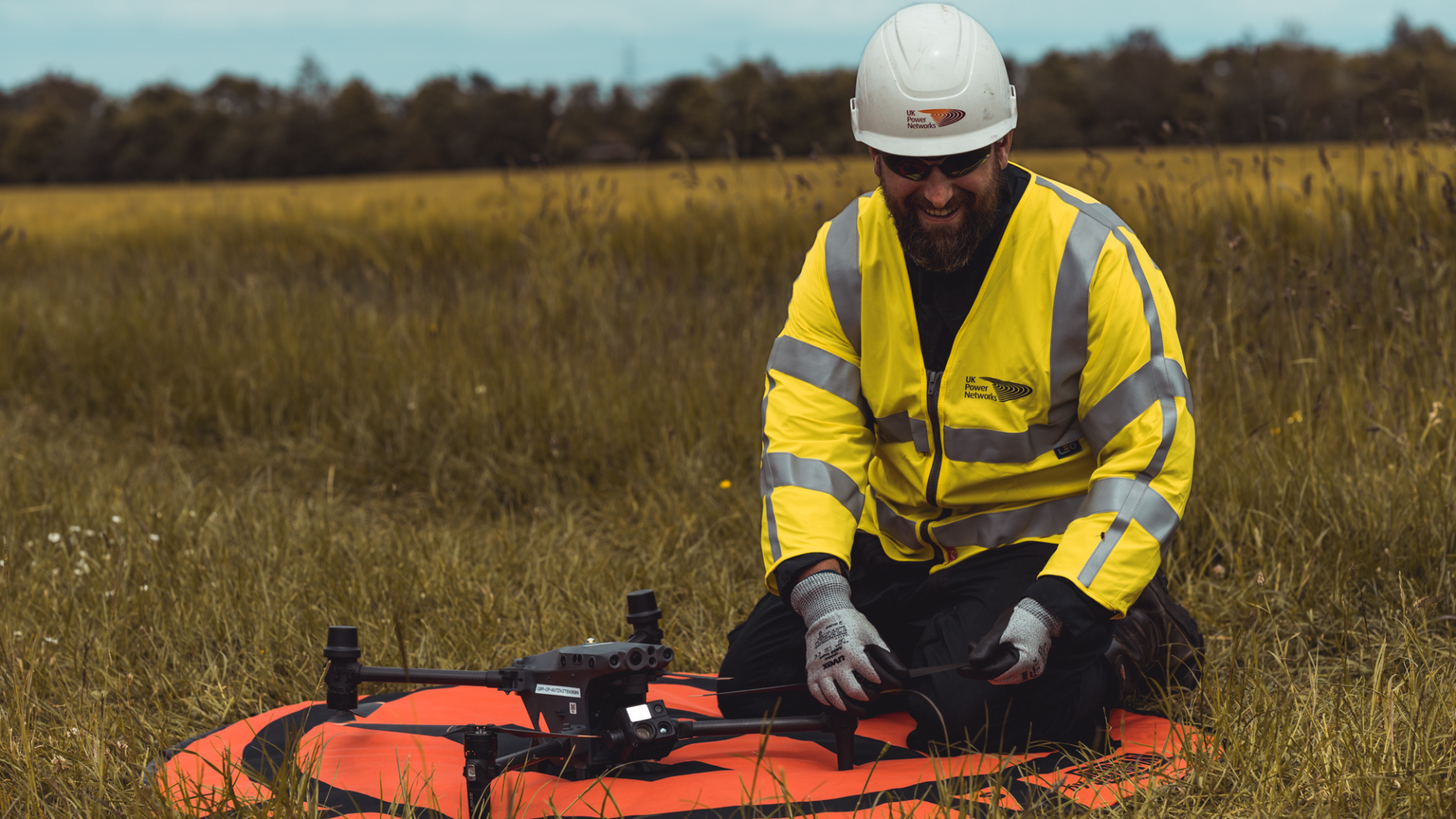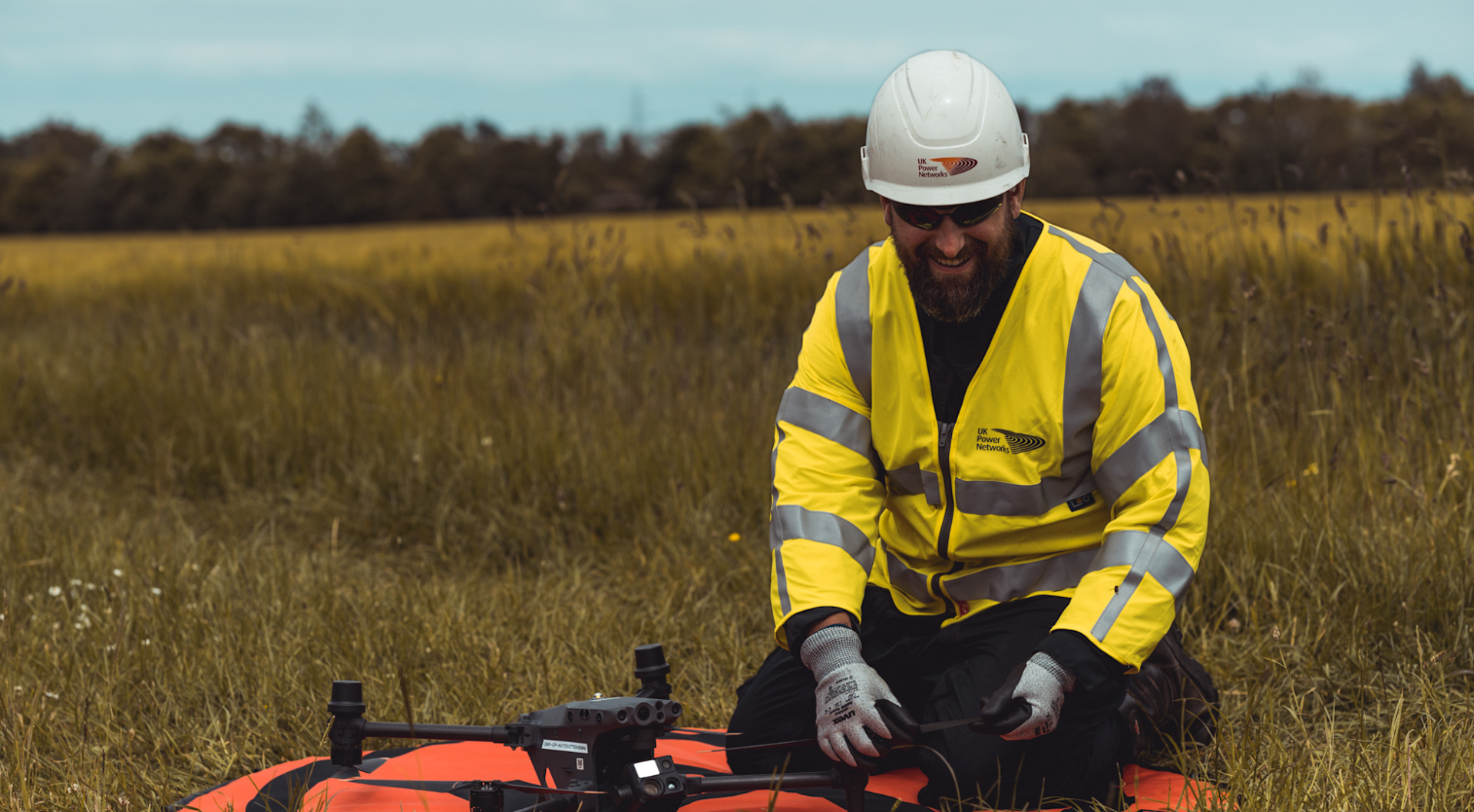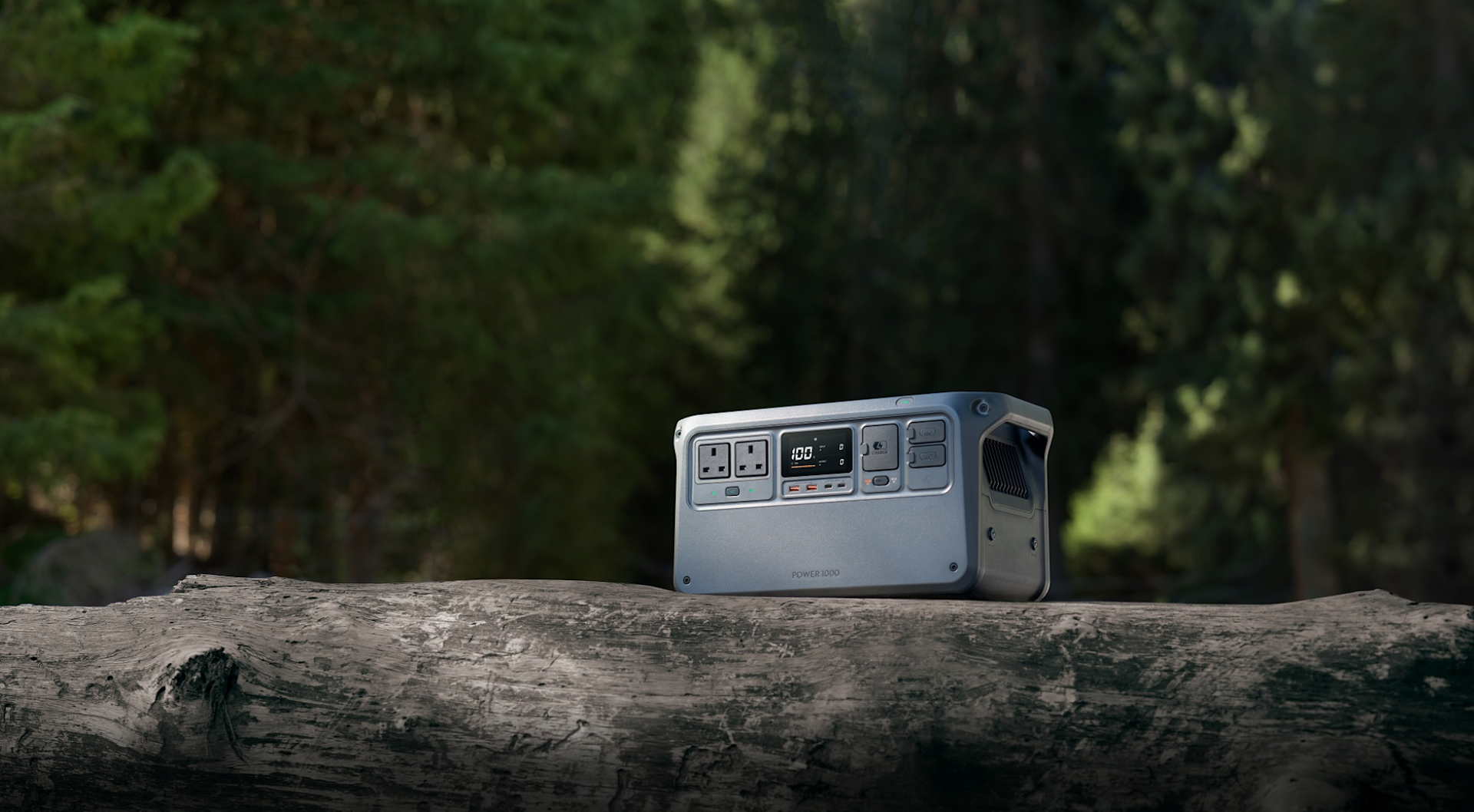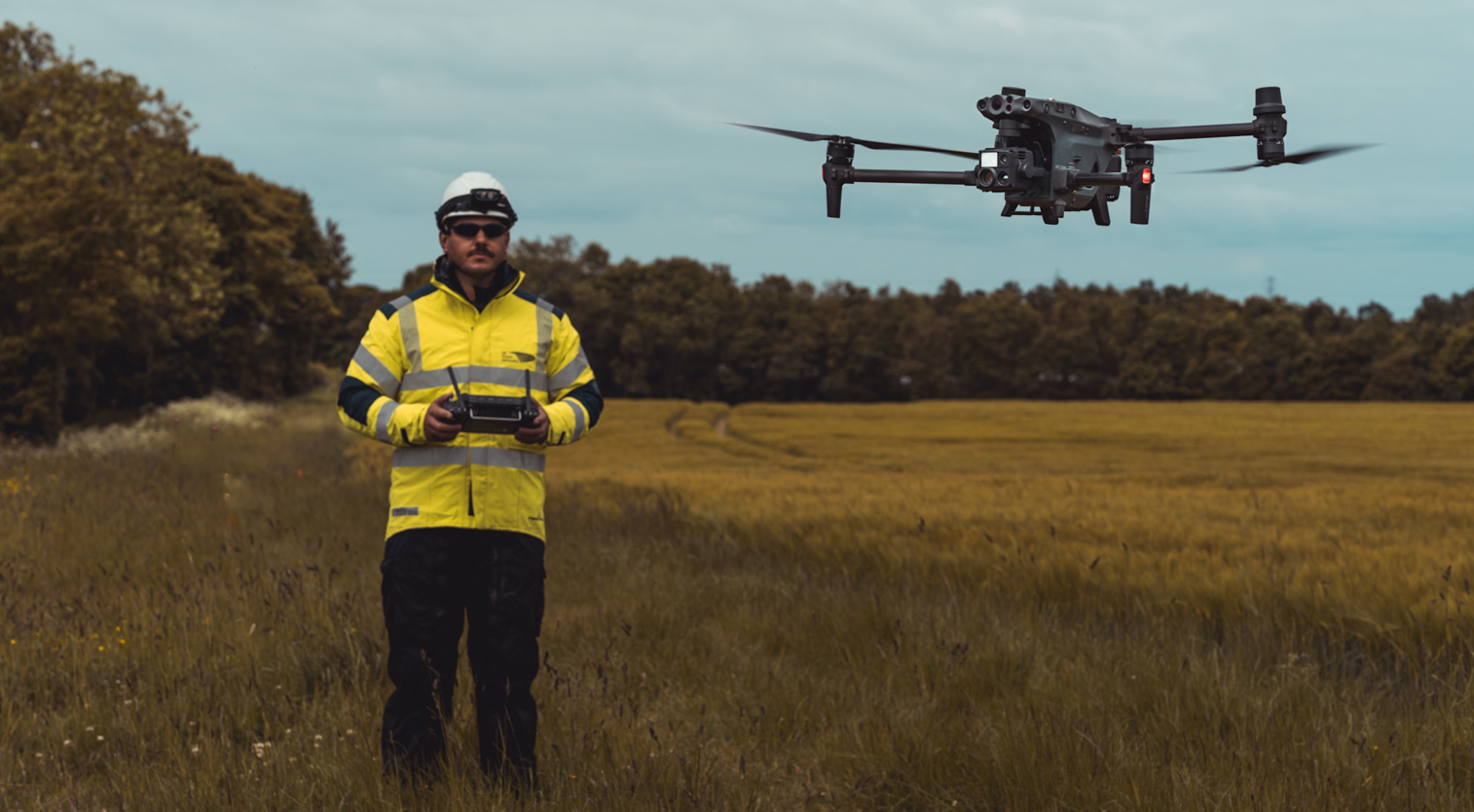
Case Studies
How DJI Power Banks are extending drone powerline inspections for UK Power Networks
Discover how portable power stations are boosting efficiency and supporting sustainability in the field
UK Power Networks uses the DJI Power 1000 and 500 to keep their drones fully charged in the field, extending mission times in remote locations.
The Power 1000 is ideal for supporting longer missions and larger aircraft, with its 1024Wh capacity and fast charging dual 140W USB-C ports.
The Power 500 (512 Wh) is utilised for inspections with smaller drones like the DJI Mini 4 Pro.
Both stations are compatible across the DJI drone fleet, including the M30T, Mavic 3 Pro, and Mini 4 Pro.
The Power stations are highly versatile and can also charge devices such as phones and torches.
UK Power Networks is benefiting from more efficient operations, with less downtime and increased airtime.
They are also achieving greater sustainability by reducing trips back to base for charging, which helps save on fuel costs.
Engineer teams are avoiding draining vehicle batteries, further cutting fuel use.
"The DJI power banks have proved invaluable for maintaining power in the field, keeping our equipment charged in remote locations and enabling longer, more efficient drone inspections with less travelling back to the office to recharge," says Philip Burke, Lead Field Engineer & UAS Manager at UK Power Networks.
Popular for their reliability and versatility, the DJI Power series charges not only DJI drone batteries but is also compatible with 99% of common appliances and devices. These portable power stations are a game changer for keeping your tech fully charged, wherever you are.
UK Power Networks explains how the DJI Power 1000 and Power 500 are helping teams keep their drone fleet fully charged during powerline inspections in remote locations.
In this case study we cover what prompted UK Power Networks to start using the DJI Power stations, and how they have impacted drone powerline inspections, from greater efficiency to more sustainable operations.

The need for reliable charging solutions in the field
For organisations such as UK Power Networks, drones are essential for inspecting and maintaining powerlines. The organisation operates a fleet of 34 DJI drones, including the Matrice 30T, Mavic 3 Pro, and Mini 4 Pro.
Drones provide easier access to hard-to-reach areas, can be deployed quickly, gather highly detailed data using thermal cameras and smart flight modes designed for powerline inspections.

However, carrying out inspections in remote areas for prolonged periods without reliable charging is challenging. Some powerline inspections, such as a 33kV line patrol, can span considerable distances.
For these missions, the team uses eight batteries for their DJI M30T aircraft, which allows for around four flights, but this still isn’t enough.
This left UK Power Networks with two options: charge their drones via vehicle power or return to the office.
Vehicle charging led to frequent issues, with engineers reporting inverter cables tripping and a drain on the vehicle’s battery. Returning to the office took up more time and wasted fuel.
These issues inspired the team to look for other charging solutions, which brings us to the DJI Power series.
Introducing the DJI Power 1000 and DJI Power 500
In January 2025, UK Power Networks invested in two DJI Power 1000 and two Power 500 portable power stations. This investment has solved previous charging issues, improved efficiency, and reduced fuel consumption.
Philip Burke, Lead Field Engineer & UAS Manager at UK Power Networks, shared:
“As soon as we started using the DJI Power stations, the team noticed a huge improvement in the field. Being able to charge drone batteries on site meant less time spent commuting back to the office or relying on car batteries. It also made it much easier to keep torches and phones charged, which was another major help.”
Both the Power 1000 and Power 500 are compact and support fast charging of DJI drone batteries using an SDC cable. They also accommodate a wide variety of devices, allowing engineers to charge torches, phones, and other equipment through its multiple ports.

The Power units are designed to run as quietly as possible, with noise levels as low as 23dB, making them non-disruptive for engineers charging equipment while commuting between inspection sites.
When it comes to keeping the power stations fully charged, in addition to grid charging they also support solar and car recharging, so they can be charged in the field too if needed.
So far, UK Power Networks have been using grid power to keep the stations charged and have found them to remain operational throughout the day. Each station can reach a full charge in 70 minutes, with 80% charge achieved in just 50 minutes.
Lets take a look at the key specs of the Power stations:
Feature | Power 1000 | Power 500 |
|---|---|---|
Capacity | 1024Wh | 512Wh |
Maximum Continous Output | 2200W | 1000W |
Number of Ports | AC Output × 2 USB-C × 2 USB-A × 2 SDC × 1 SDC Lite × 1 AC Input × 1 | AC Output × 2 USB-C × 2 USB-A × 2 SDC Lite × 1 AC Input × 1 |
Weight | Approx. 13 kg | Approx. 7.3 kg |
Dimensions (L×W×H) | 448 × 225 × 230 mm | 305 × 207 × 177 mm |
Battery life | 4000 Cycles | 4000 Cycles |
Charging Methods | Grid Power Car Power Solar Power | Grid Power Car Power Solar Power USB-C Recharging |
The Power 1000, with its 1024Wh capacity and maximum output of 2200W, is the more heavy-duty solution. It features dual USB-C output ports, each delivering up to 140W, allowing for fast charging of multiple devices.
For even more power, you can pair the Power 1000 with the 2048Wh Power Expansion Battery 2000—up to five can be connected to boost your capacity even further.
With a 512Wh capacity and maximum 1000W output, the Power 500 prioritises portability. Its smaller frame makes it easier to transport, and the lower capacity is ideal for charging smaller drones.
Charging times:
Using the Power 1000, the M30T TB30 Intelligent Flight Battery can be charged from 10% to 95% in just 32 minutes, and it can power a lamp for up to 92 hours.
The Power 500 can charge a Mavic 3 series battery from 10% to 95% in 32 minutes and can power a lamp for up to 47 minutes.
Safety is a priority with both units. Each features 11 temperature sensors to monitor heat dissipation, ensuring reliable operation in temperatures up to 40°C. The durable LFP cells provide up to 3,000 cycles and an estimated lifespan of around ten years, even with regular use.
Additionally, an intelligent Battery Management System (BMS) automatically manages power and recharging, pausing when safety limits are reached and resuming once conditions stabilise.
Field results and highlights
After implementing the Power stations, the engineering teams immediately felt the benefits of having a portable power source.
Key advantages at a glance:
Flexible charging on the move, with power stations easily set up in the boot of vans
Quick battery charging in the field or while commuting, reducing downtime and increasing airtime
More productive and efficient drone missions
Fewer trips back to the office, saving fuel and lowering costs
Longer periods spent in the field
Operations are now more sustainable and environmentally friendly
The engineers were most impressed with the flexibility of the Power 1000 and 500. With these units, they could charge their drones not only in the field between flights but also while travelling between sites. This enabled quicker deployments, reduced downtime, and allowed for more time in the field.
Philip Burke, Lead Field Engineer & UAS Manager at UK Power Networks, said:
“The biggest advantage of using the Power stations is their flexibility. Engineers can now charge their equipment while commuting and recharge spare batteries in the field, making battery swaps much quicker. It’s been a huge time saver, and made drone powerline inspections much more efficient and sustainable."
Alongside improved efficiency, operations have become more sustainable and cost-effective, with fewer journeys back to the office to recharge equipment. The teams are saving on fuel, resulting in more eco-friendly and economical field trips.

Summary
UK Power Networks has greatly benefited from implementing the Power 1000 and Power 500.
These portable power banks have successfully resolved the organisation’s charging challenges, removing the need to rely on vehicle power or return to the office to charge their drones.
Philip Burke, Lead Field Engineer & UAS Manager at UK Power Networks, reflected:
"Overall, the DJI Power stations have proved to be a cost-effective, straightforward, and hassle-free solution for our engineering teams. We’re now looking to invest in additional units to further improve the efficiency and sustainability of our drone operations."
Get in touch
If you’re interested in supporting your drone fleet with the DJI Power series and want to learn more, read our blog comparing the entire range—including the new Power 1000 V2 and Power 2000.
Or, contact a member of the heliguy™ team to discuss which power station would best suit your operations.
